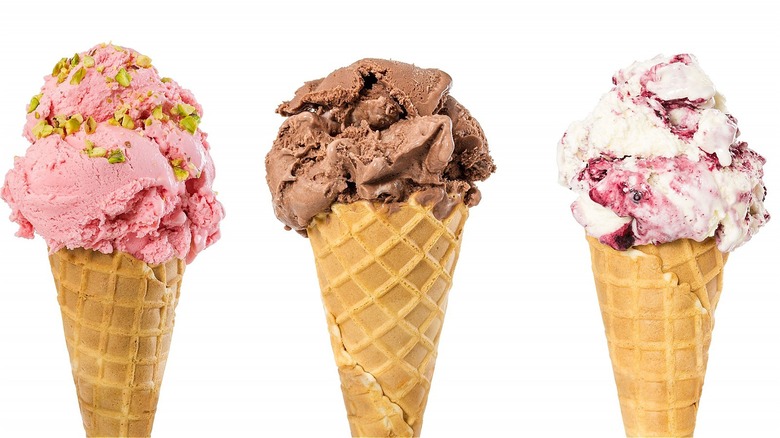The Unexpected Origin Of Ice Cream
Ice cream is one of America's favorite desserts; in fact, in a 2015 survey conducted by Yahoo!, it took the top spot for most preferred desserts, with 41% of Americans stating they like to enjoy ice cream for an after-dinner indulgence or a special snack. While it might be hard to imagine a time when ice didn't exist in the form people know and love, the treat has a long history and had to evolve into the sugary delight it is today.
Even before ice cream became an American favorite, similar types of desserts emerged in France and Italy, including sherbets, after the art of making ice cream-like products came to Europe, according to Thought Co. The site IceCream.com gives credit to Marco Polo for introducing ice cream to Europeans. According to The Morning Call, Polo appears to have learned about a version of the frozen dessert while staying with emperor Kublai Khan in China during the 13th century. By then, it had likely been around for hundreds of years. In the 600s, China's King Tang come up with desserts made from milk and ice. Even before that, records indicate that Nero, a Roman emperor who ruled during the height of the empire, topped ice harvested from mountains with fruit (via Thought Co.).
The history of ice cream is anything but vanilla
When ice cream came to the United States around the 1700s, it was popularized by several famous political figures including Thomas Jefferson and George Washington (via Thought Co.). Jefferson famously wrote down one of the earliest recipes for ice cream after ordering vanilla from France (via Smithsonian Magazine). Washington had a way to make ice cream at his Mount Vernon home that required 300 pieces (via Mental Floss). Come 1812, First Lady Dolly Madison was serving ice cream at the White House. Her favorite ice cream was oyster flavored (via PBS).
In the days of the United States' founding fathers, ice cream was naturally a delicacy, given how difficult it was to make and the fact that it would melt quickly. Thanks to developments in the invention of modern refrigeration and homogenization in the 1800s, ice cream became available to the masses, and by the early 1900s, it was often served in an ice cream cone, invented at the 1904 World's Fair. Today, youngsters and adults alike all scream for ice cream, the ultimate international treat.

